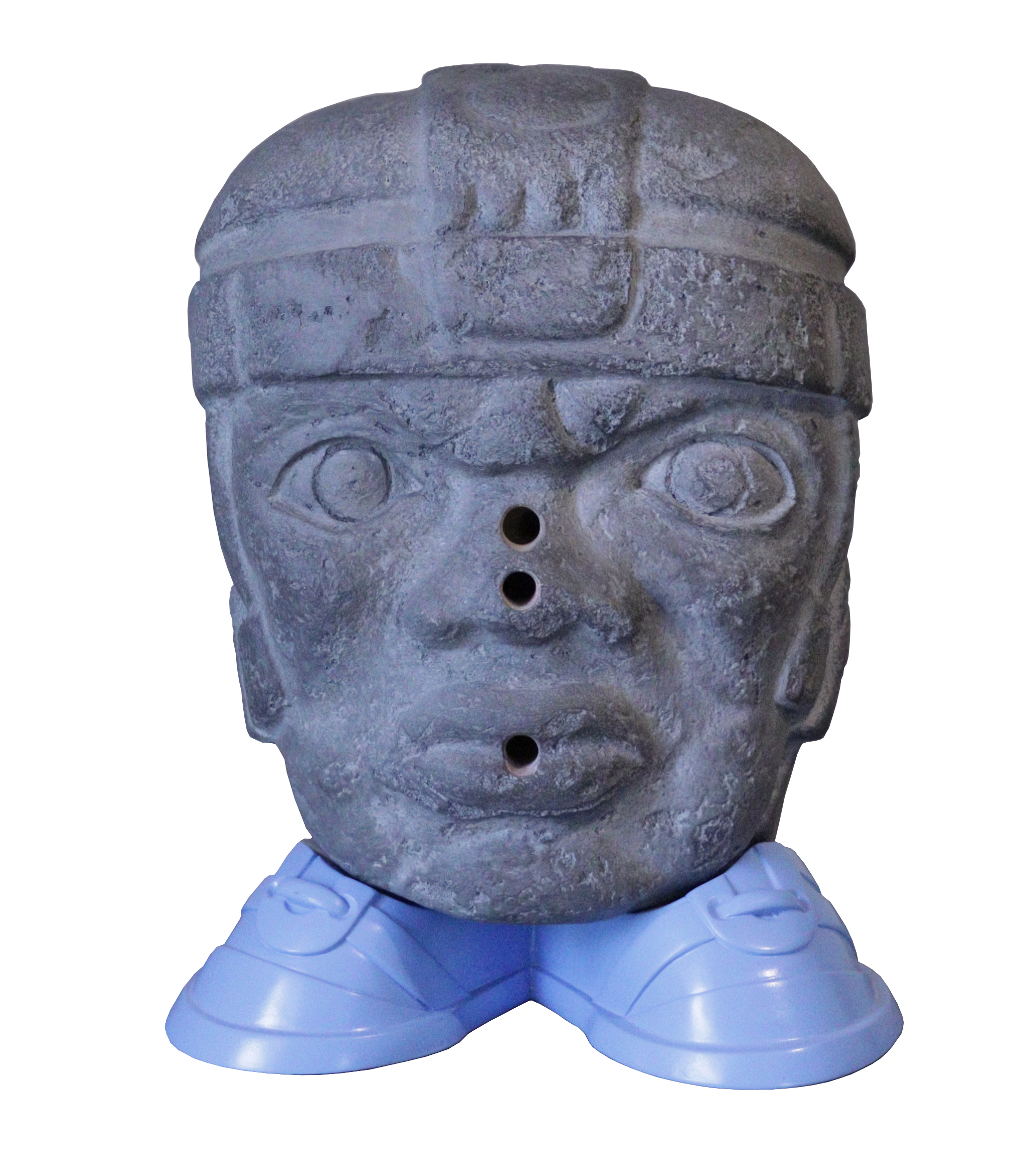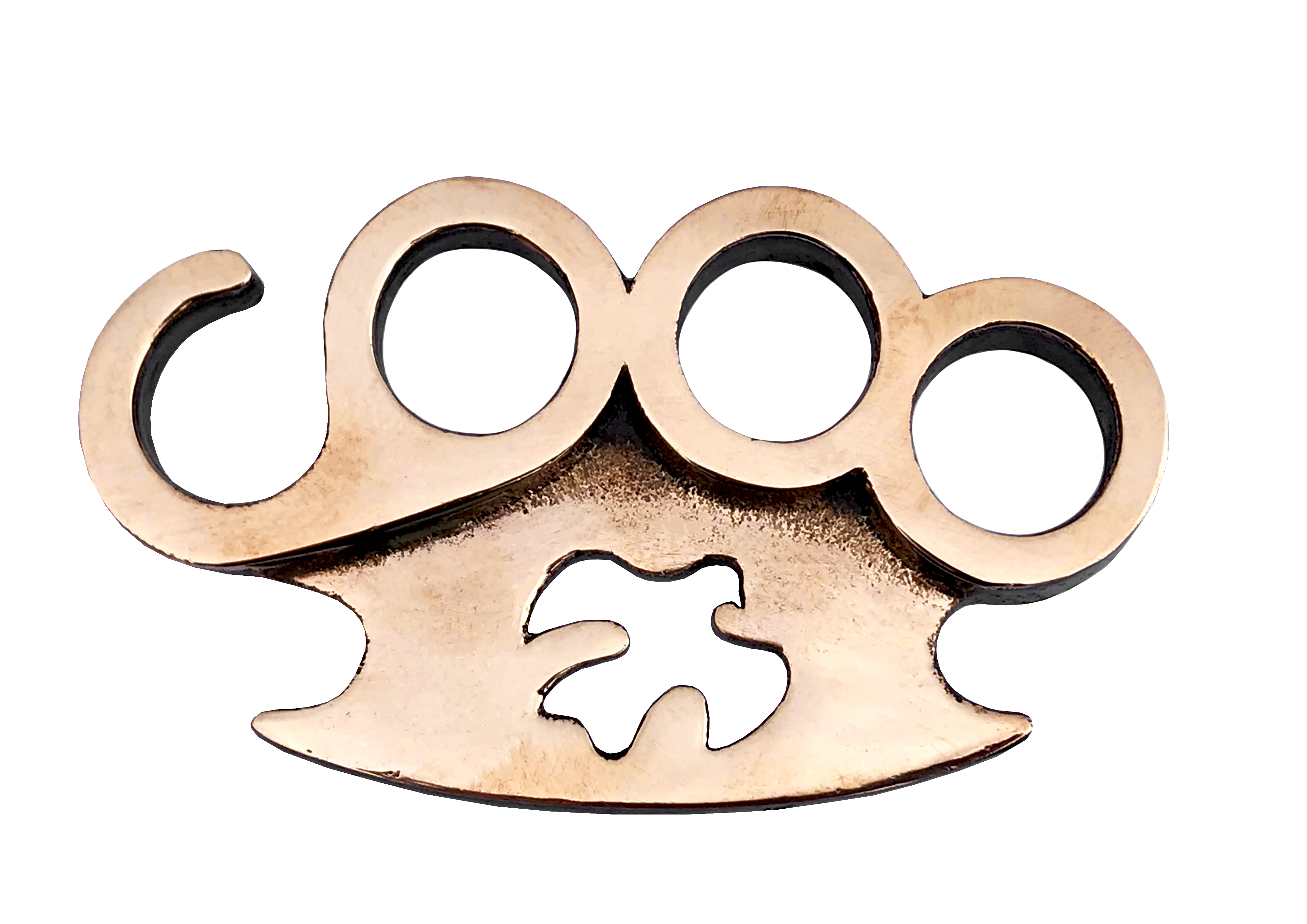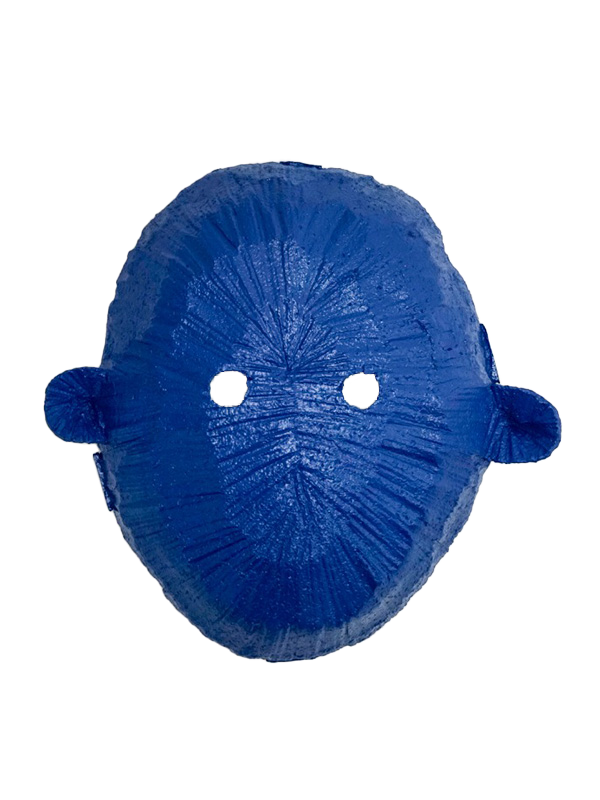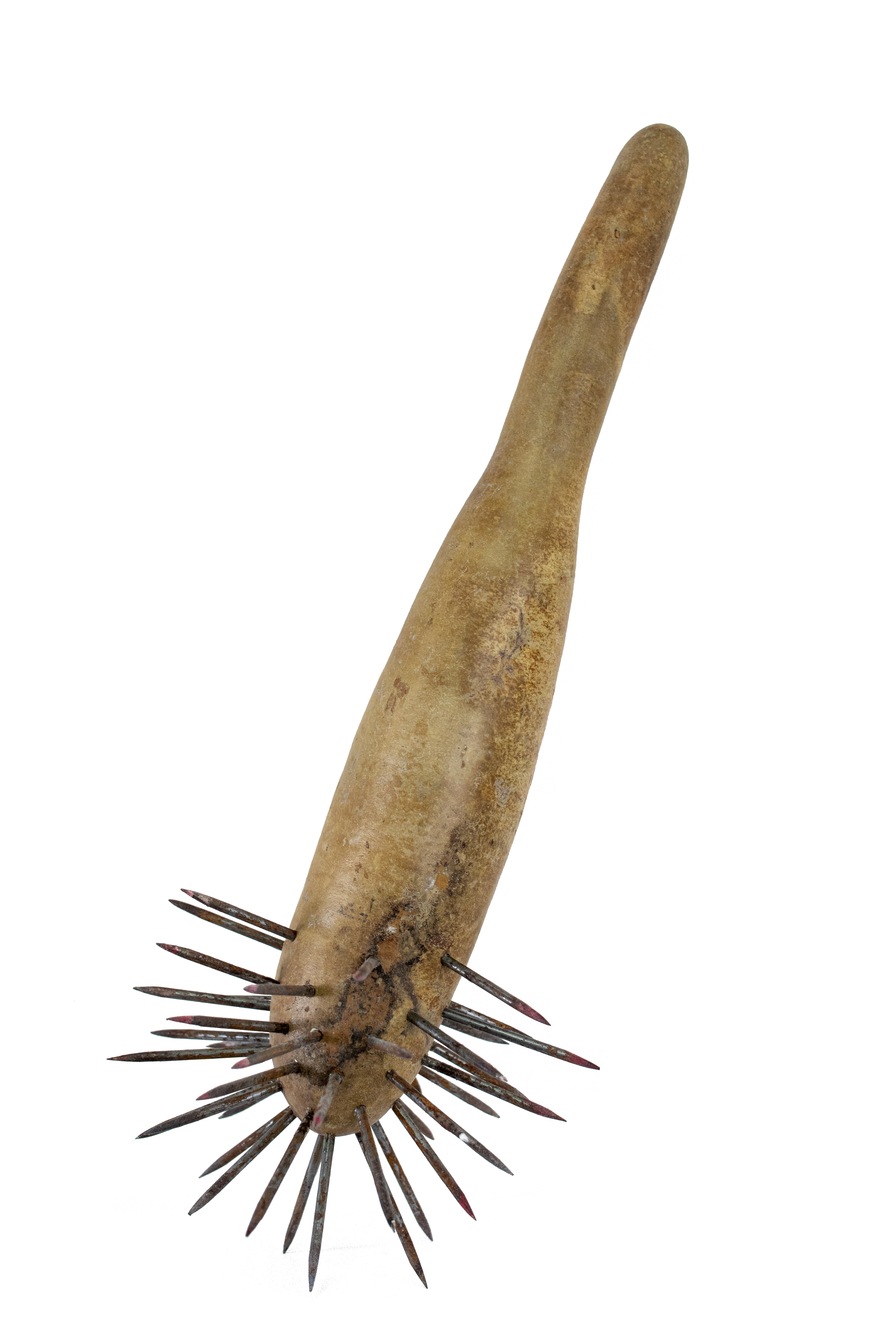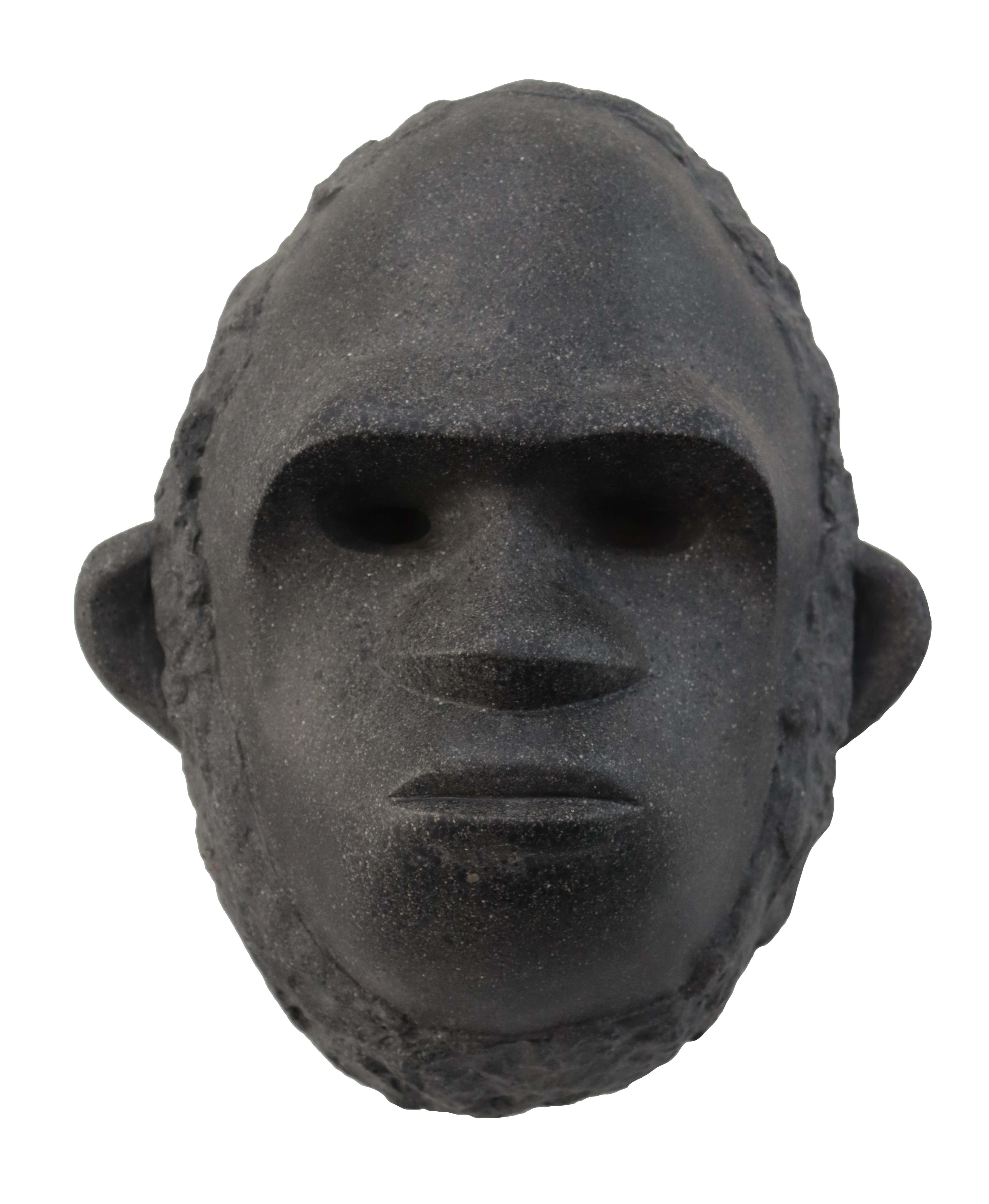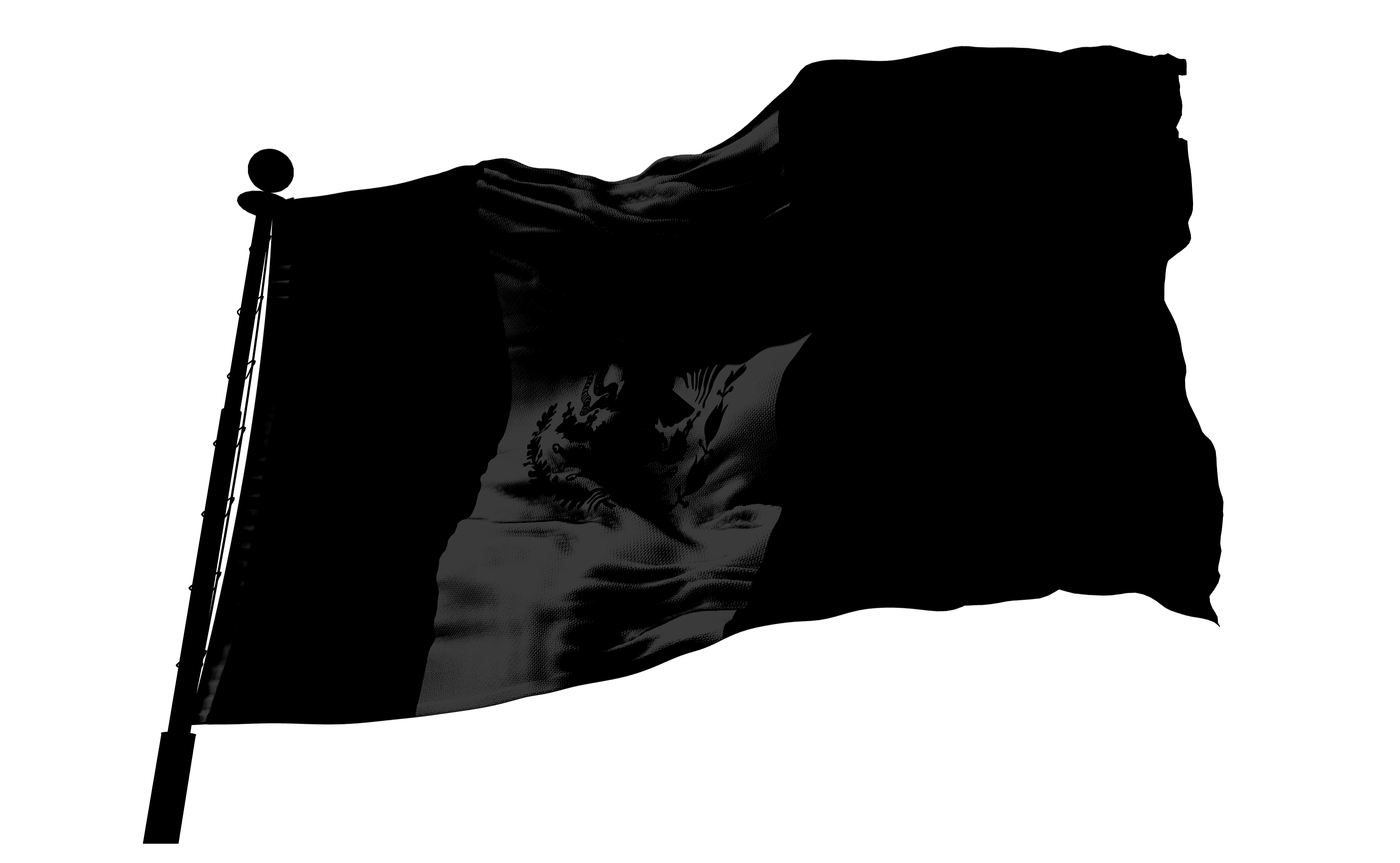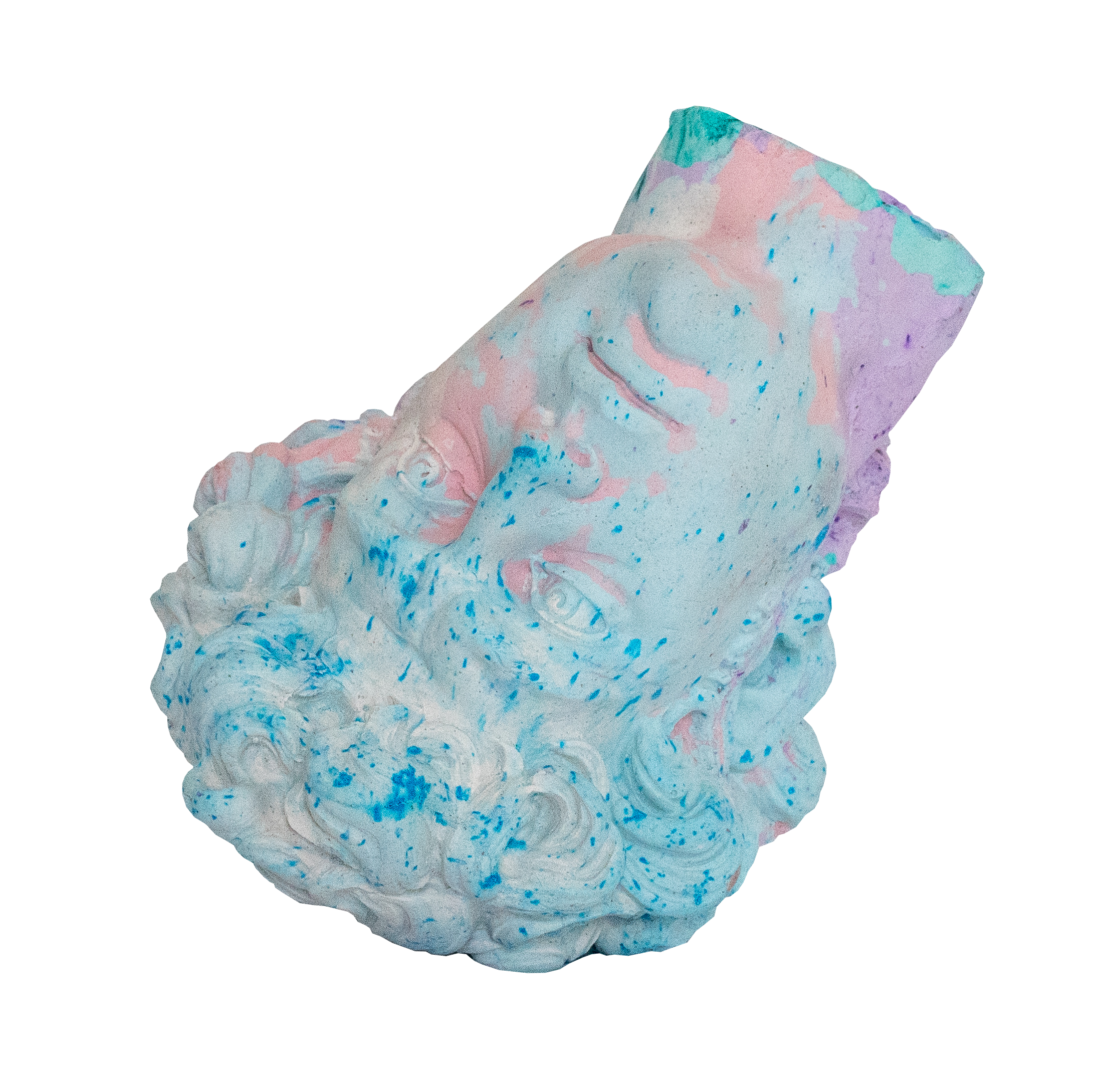Tributo a Gordon
Guadalajara 90210 – junio y julio 2019
ESP
Tributo a Gordon fue una intervención in situ en el marco de la exposición colectiva El jardín de Galileo, organizada por Guadalajara 90210 en una casa por demolerse en Colonia Polanco. La intervención consistió en una perforación de 250 cm de diámetro en una pared que separaba dos habitaciones de la casa y en la instalación, colgando del techo de una de ellas, de una figura metálica que representa la silueta de un simio, de la cual a su vez cuelga un racimo de plátanos fabricados en tela serigrafiada.
Como en muchas de sus piezas, Chavis reúne en este caso elementos que parecieran ser radicalmente opuestos tanto en términos estéticos como materiales y conceptuales. El agujero en la pared y el título de la obra, por un lado, hacen una evidente alusión al trabajo del artista norteamericano Gordon Matta-Clark, quien se hizo conocido en la segunda mitad del siglo XX por su concepción anárquica de la arquitectura (anarchitecture) y en concreto por los building cuts; particularmente, la intervención en Polanco es una cita al Conical Intersect. El simio metálico y el racimo de plátanos, por otro lado, se inscriben en una estética manifiestamente pop: los plátanos son una interpretación volumétrica de la icónica banana que Andy Warhol hizo para la carátula del álbum debut de The Velvet Underground y el simio, plano y caricaturesco (además de ser, según el artista, su autorretrato) hace pensar en un logotipo de marca.
Por una parte el hecho de que tanto Matta-Clark como Warhol sean de la misma época y lugar, a la vez que representantes de visiones en apariencia antagónicas del rol del arte, abre espacio a una interpretación de la pieza con tintes históricos y situados. Por otro lado, si se toma en consideración el contexto de la pieza —la Ciudad de México, la colonia Polanco— los elementos que la constituyen cobran una segunda capa de complejidad: tanto el simio como el racimo de plátanos podrían ser leídos como representativos de la estética exótica, barata y caricaturesca que se adjudica al “sur global” y la cita a Matta-Clark como representativa del arte site-specific que se desarrolló en los Estados Unidos en los años 70, es decir de un arte predominantemente masculino, blanco, conceptual y caro.
ENG
The artwork "Tributo a Gordon" was an in situ intervention as part of the collective exhibition "El jardín de Galileo" organized by Guadalajara 90210 in a house that was going to be demolished in Colonia Polanco. The intervention consisted of a 250 cm diameter hole drilled in a wall separating two rooms of the house and the installation, hanging from the ceiling of one of them, of a metal figure representing the silhouette of a monkey, from which a cluster of bananas made of screen-printed fabric also hangs.
As in many of Chavis' pieces, in this case, he brings together elements that appear to be radically opposed in terms of aesthetics, materials, and concepts. The hole in the wall and the title of the work, on the one hand, make an evident allusion to the work of the American artist Gordon Matta-Clark, who became known in the second half of the 20th century for his anarchic conception of architecture (anarchitecture) and specifically for his building cuts; particularly, the intervention in Polanco is a quote from the Conical Intersect. The metal monkey and the cluster of bananas, on the other hand, are part of a manifestly pop aesthetic: the bananas are a volumetric interpretation of the iconic banana that Andy Warhol made for the cover of The Velvet Underground's debut album, and the monkey, flat and caricatured (besides being, according to the artist, his self-portrait), evokes a brand logo.
On the one hand, the fact that both Matta-Clark and Warhol are from the same time and place, as well as representatives of apparently antagonistic visions of the role of art, opens up space for an interpretation of the piece with historical and situated overtones. On the other hand, if one takes into account the context of the piece—the City of Mexico, the Polanco neighborhood—the elements that make it up take on a second layer of complexity: both the monkey and the cluster of bananas could be read as representative of the exotic, cheap, and caricatured aesthetic attributed to the "global south," and the quote from Matta-Clark as representative of the site-specific art that developed in the United States in the 1970s, i.e., predominantly male, white, conceptual, and expensive art.
Guadalajara 90210 – junio y julio 2019
ESP
Tributo a Gordon fue una intervención in situ en el marco de la exposición colectiva El jardín de Galileo, organizada por Guadalajara 90210 en una casa por demolerse en Colonia Polanco. La intervención consistió en una perforación de 250 cm de diámetro en una pared que separaba dos habitaciones de la casa y en la instalación, colgando del techo de una de ellas, de una figura metálica que representa la silueta de un simio, de la cual a su vez cuelga un racimo de plátanos fabricados en tela serigrafiada.
Como en muchas de sus piezas, Chavis reúne en este caso elementos que parecieran ser radicalmente opuestos tanto en términos estéticos como materiales y conceptuales. El agujero en la pared y el título de la obra, por un lado, hacen una evidente alusión al trabajo del artista norteamericano Gordon Matta-Clark, quien se hizo conocido en la segunda mitad del siglo XX por su concepción anárquica de la arquitectura (anarchitecture) y en concreto por los building cuts; particularmente, la intervención en Polanco es una cita al Conical Intersect. El simio metálico y el racimo de plátanos, por otro lado, se inscriben en una estética manifiestamente pop: los plátanos son una interpretación volumétrica de la icónica banana que Andy Warhol hizo para la carátula del álbum debut de The Velvet Underground y el simio, plano y caricaturesco (además de ser, según el artista, su autorretrato) hace pensar en un logotipo de marca.
Por una parte el hecho de que tanto Matta-Clark como Warhol sean de la misma época y lugar, a la vez que representantes de visiones en apariencia antagónicas del rol del arte, abre espacio a una interpretación de la pieza con tintes históricos y situados. Por otro lado, si se toma en consideración el contexto de la pieza —la Ciudad de México, la colonia Polanco— los elementos que la constituyen cobran una segunda capa de complejidad: tanto el simio como el racimo de plátanos podrían ser leídos como representativos de la estética exótica, barata y caricaturesca que se adjudica al “sur global” y la cita a Matta-Clark como representativa del arte site-specific que se desarrolló en los Estados Unidos en los años 70, es decir de un arte predominantemente masculino, blanco, conceptual y caro.
ENG
The artwork "Tributo a Gordon" was an in situ intervention as part of the collective exhibition "El jardín de Galileo" organized by Guadalajara 90210 in a house that was going to be demolished in Colonia Polanco. The intervention consisted of a 250 cm diameter hole drilled in a wall separating two rooms of the house and the installation, hanging from the ceiling of one of them, of a metal figure representing the silhouette of a monkey, from which a cluster of bananas made of screen-printed fabric also hangs.
As in many of Chavis' pieces, in this case, he brings together elements that appear to be radically opposed in terms of aesthetics, materials, and concepts. The hole in the wall and the title of the work, on the one hand, make an evident allusion to the work of the American artist Gordon Matta-Clark, who became known in the second half of the 20th century for his anarchic conception of architecture (anarchitecture) and specifically for his building cuts; particularly, the intervention in Polanco is a quote from the Conical Intersect. The metal monkey and the cluster of bananas, on the other hand, are part of a manifestly pop aesthetic: the bananas are a volumetric interpretation of the iconic banana that Andy Warhol made for the cover of The Velvet Underground's debut album, and the monkey, flat and caricatured (besides being, according to the artist, his self-portrait), evokes a brand logo.
On the one hand, the fact that both Matta-Clark and Warhol are from the same time and place, as well as representatives of apparently antagonistic visions of the role of art, opens up space for an interpretation of the piece with historical and situated overtones. On the other hand, if one takes into account the context of the piece—the City of Mexico, the Polanco neighborhood—the elements that make it up take on a second layer of complexity: both the monkey and the cluster of bananas could be read as representative of the exotic, cheap, and caricatured aesthetic attributed to the "global south," and the quote from Matta-Clark as representative of the site-specific art that developed in the United States in the 1970s, i.e., predominantly male, white, conceptual, and expensive art.




